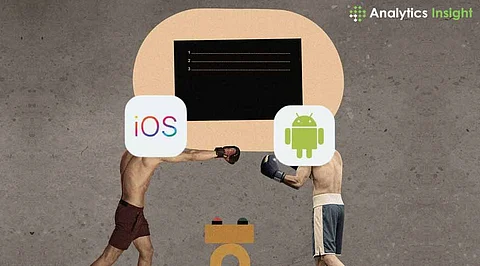

When it comes to choosing between iOS vs. Android for mobile app development, the choice could make or break the success of your project. Both these development platforms have some very distinct advantages, and often, the correct judgment relies on elements such as the target audience, complexity, and resources.
In this article, we'll show you the main differences between iOS and Android development to help you make the right decision for your app.
Some of the most critical reasons that create differences between iOS and Android development involve the choice of the programming language.
iOS: Swift, introduced by Apple, is a modern, fast, and user-friendly programming language. Because of its clarity of syntax and its performance, Swift is the best choice for developing applications in iOS.
Android: Traditionally, Java was used, but recently Kotlin has gained great popularity in the context of developing Android apps because it features simpler syntax while providing seamless compatibility with Java. This makes developing Android applications more flexible for developers who prefer modern languages.
Meanwhile, both iOS and Android are reliant on powerful integrated environments oriented toward their respective platforms.
iOS: The developers work on Xcode, Apple's official IDE, fine-tuned for Swift. Xcode allows them to code, test, and debug and thus provides a perfect development experience for iOS apps.
Android: Android developers work on Android Studio, which means an intuitive interface and a large number of supported languages, among them Java, Kotlin, and C++. It also has some other useful features like Gradle to effectively build applications and therefore is a complete tool for application development on Android.
The design principles of iOS differ from those of Android; understanding such a factor bears influence on the user's experience.
iOS: Apple's Human Interface Guidelines focuses on clarity, simplicity, and consistency across devices. This premise of minimalism makes for a sleek and intuitive user experience.
Android: The fundamentals of Google Material Design are flexible and customizable.It focuses on bold colors, shadows, and fluid interactions. This in turn can make the developer very creative yet have a consistent design for all Android apps.
iOS: Considered to have one of the longest app reviewing processes, the Apple App Store has guidelines set aside for the quality, safety, and usability of apps. This works to the advantage of iOS apps in that their standards are always high though one may have to wait longer to get an app published.
Android: The reviewing process in the Google Play Store is not as strict, so the applications go live more quickly. On the other hand, this may lead to a wider discrepancy in quality for the apps within the Android ecosystem.
Device fragmentation is one of the key issues when discussing iOS and Android development.
iOS: Since Apple controls both hardware and software, fragmentation is not as big of a deal. The developers will only need to optimize their apps for a few models. Application development and testing processes are finer and more rounded.
Android: Greater openness of source code and wider prevalence among various manufacturers make it more fragmentary. Developers will have to account for more screen sizes and resolutions as well as OS versions. That might make the process of development more complicated.
iOS: Generally speaking, iOS users are ready to pay for their apps, making iOS much more favorable in case your business model relies on in-app purchases or subscriptions.
Android: A very general differentiation for both operating systems could be that Android apps tend to be free or monetized by just freemium models or ad support because users are less likely to spend money on apps.
iOS: This operating system attracts users who value design, simplicity, and a premium user experience. It is highly suitable if the target audience includes rich or technologically advanced audiences.
Android: It is for a larger and more international audience with a focus on being able to customize and being more budget-friendly. Thus, it leads the markets where devices with low costs are more in demand.
iOS: In iOS, development is relatively more affordable and much easier to maintain because of fewer devices and OS versions.
Android: Because this is more fragmented, it is, in turn, more difficult and expensive to develop, considering that there is a wide assortment of devices and versions of the operating system.
The most basic question about choosing either iOS or Android depends on the needs of your project. If you are targeting a premium audience, prefer a smooth development process, and want a more direct way of generating revenue with your app, iOS might be your target. Otherwise, Android offers more flexibility in design and provides greater access to an extremely large number of users. Knowing about these two development platforms and changes in app design will help you make an informed decision for the development of your mobile application.
